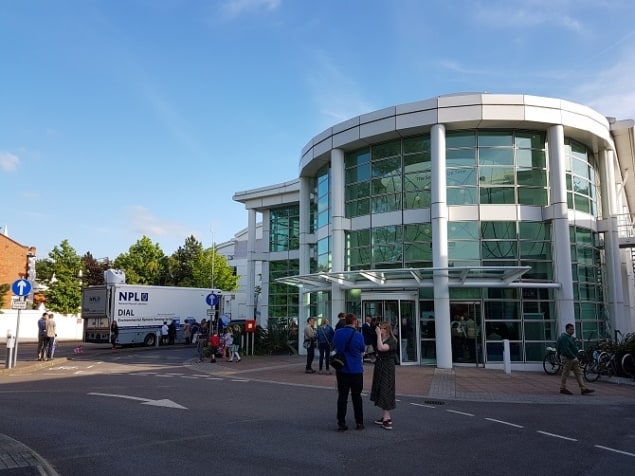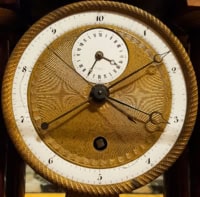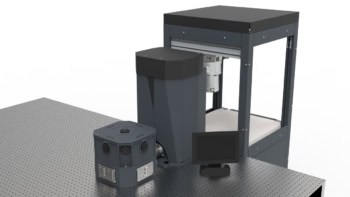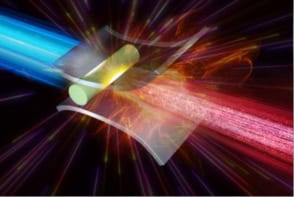
In an ever-changing world the few constants we can rely on become ever more important. The distance to the nearest high street bank may increase, hem lines may rise and fall, but the metre will always measure the same length. Or will it? With several SI units facing redefinition in 2019, the National Physical Laboratory (NPL), the UK’s national measurement standards laboratory, opened its doors to around 5000 visitors for its biennial open house to shed light on what we mean when we refer to everyday units and the work that goes into defining them.
“Measurement is what makes science science,” said NPL researcher Michael de Podesta, when I asked why metrology matters. No surprise then that scientists have discussed ways of defining internationally recognised units of measurements for centuries. However it was not until 1960 that the International Bureau of Weights and Measures first established the International System of Quantities (SI) formerly the International System of Units: the candela, kilogram, metre, second, Ampere, Kelvin, and the mole. This concise list in fact caters for the wide range of measurands across the physical sciences, as other units in current use can be defined in terms of these seven. For example, an Ohm can be defined as kg m2/s3 A2 from the definition of resistance as power / current2.
There are logical explanations for the original definitions of these units: the metre was 1 ten millionth of the distance between the North Pole and the Equator to the best estimates available at its invention in 1799; the second was 1/60th of 1/60th of 1/24th of a day on account of clock conventions. However these definitions have drifted from their original explanations as technological progress has demanded ever greater precision. “A lot of the SI units have been superceded technologically,” said de Podesta. “As technology advances measurements of the fundamental constants keep changing, which is bonkers, so we want to define the units in terms of these constants.”
Constant units
In 1983 the General Conference on Weights and Measures (CGPM) redefined the fundamental reference for the length of a metre – once set by a metre rule in Sevre just outside of Paris. It is now defined as the distance light will travel in a vacuum in 1/299792458 of a second, and that as far as we know is a fundamental constant. As well as the metre, the second has also been redefined in terms of the universal constant of the speed of light in a vacuum. However, there is a noticeable lag between the fundamental reference for other SI units and the technological capabilities of the present day. As Ian Robinson told attendees at NPL’s Open House, the fundamental reference for the kilogram remains a lump of platinum in Sevre, which is taken out every 50 years, weighed, cleaned and then locked away. As Robinson put it, “Not the best way to define mass in these modern times.”
On 16th November 2018 the CGPM will vote to adopt a series of new definitions for the kilogram, Kelvin, mole and Ampere. Why has it taken a further 35 years to bring the remaining definitions in line with the metre and the second? In fact the technology to define units in terms of fundamental constants is far from trivial.
Robinson, who joined NPL in 1976, worked with Bryan Kibble shortly after the 1975 invention of the Kibble balance, which will redefine the kilogram. The Kibble balance works by putting a current through a coil and measuring the induced force balanced against the gravitational pull on a kilogram. Kibble’s invention removed some of the inaccuracies of its predecessor the Ampere balance, but as Robinson said it is still “like measuring a bag of sugar in a hurricane”.
De Podesta’s work at NPL focuses on different ways of measuring temperature, and has been integral for redefining the Kelvin. “We use electromagnetics, acoustics, precision weighing – it’s a tour de force that brought together teams across NPL,” he says. Their approach uses an acoustic thermometer. As de Podesta explains, the speed of sound in a gas is exactly related to the temperature of the molecules, so he and his colleagues are actually measuring the speed of sound carried by the molecules of the gas with ultraprecision. However having finally achieved this super accurate thermometer, using it in lab proved a struggle. “It was totally humiliating – you say you’ve made the most accurate temperature and then you can’t take the temperature of something in the lab,” says Podesta. “It turned out that it was all the other thermometers that were wrong.” The corrections are small – 0.004 °C at 30 °C – however there are experiments for length measurements for example, where that level of temperature precision matters.
Quantum metrology
Shrinking device sizes also place new demands on measurement science. At NPL’s single electron device lab they are working on an alternative definition for the Ampere. Their GaAs two-dimensional electron gas experiments pump electrons into a sink that holds just one electron at a time. From there electrons hop across into a transistor device in single file, defining the smallest current possible. For larger currents the Ampere can be defined macroscopically in terms of the voltage in a superconducting Josephson junction and the resistance of the quantum Hall effect. However, as devices shrink ever smaller a definition in terms of a single electron device becomes more and more important.
At this scale terms like temperature take on new ambiguities, as their statistical definitions no longer have meaning. “You can describe the temperature in terms of the probability of an electron occupying a particular energy level,” says Masaya Kataoka. “But if this is set then it has no temperature.” In addition, although these devices are devised to define current, at this scale where discrete charges move one by one continuous classical analogue current does not really exist.
Sunday 20th May was World Metrology Day 2018, a celebration of a science de Podesta feels is underappreciated. “When you see physics on the telly there’s a lot of emphasis on boffins and geniuses and maths – some people think physics is maths and that’s completely wrong.” He adds, “Maths is telling a story but what makes physics a science is when you compare with what actually happens.” The measurements for new standard definitions at NPL are checked across the world, with the National Institute of Science and Technology (NIST) in the US also playing a key role. It is reassuring that whatever may be going on in the rest of life, the international Standard of Quantities is something we can all agree on.



